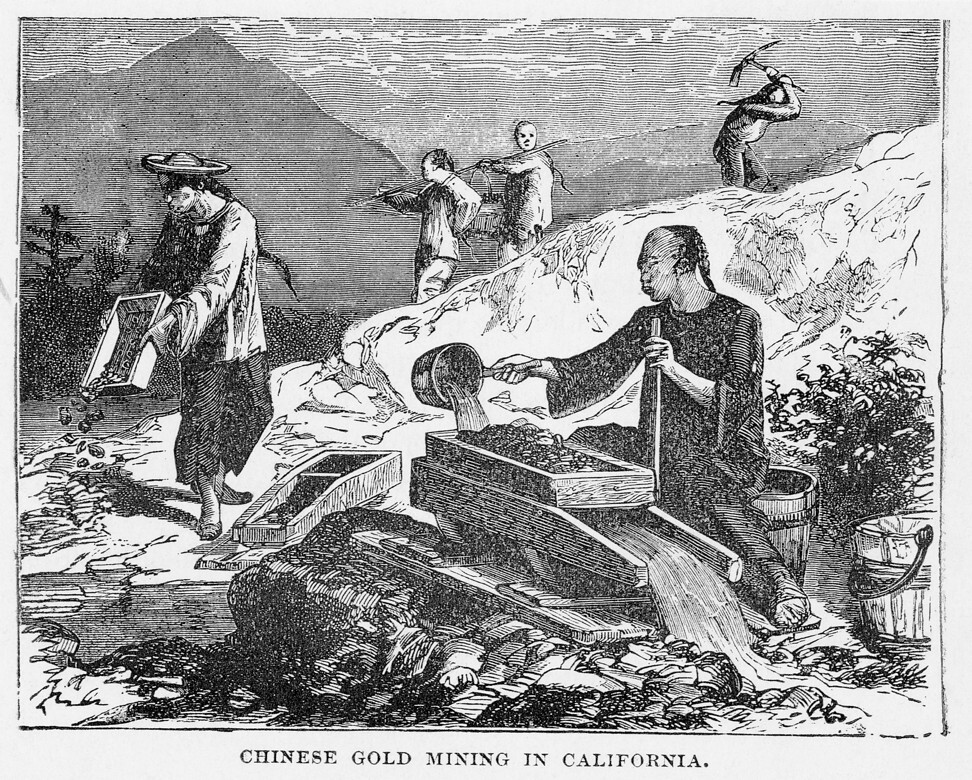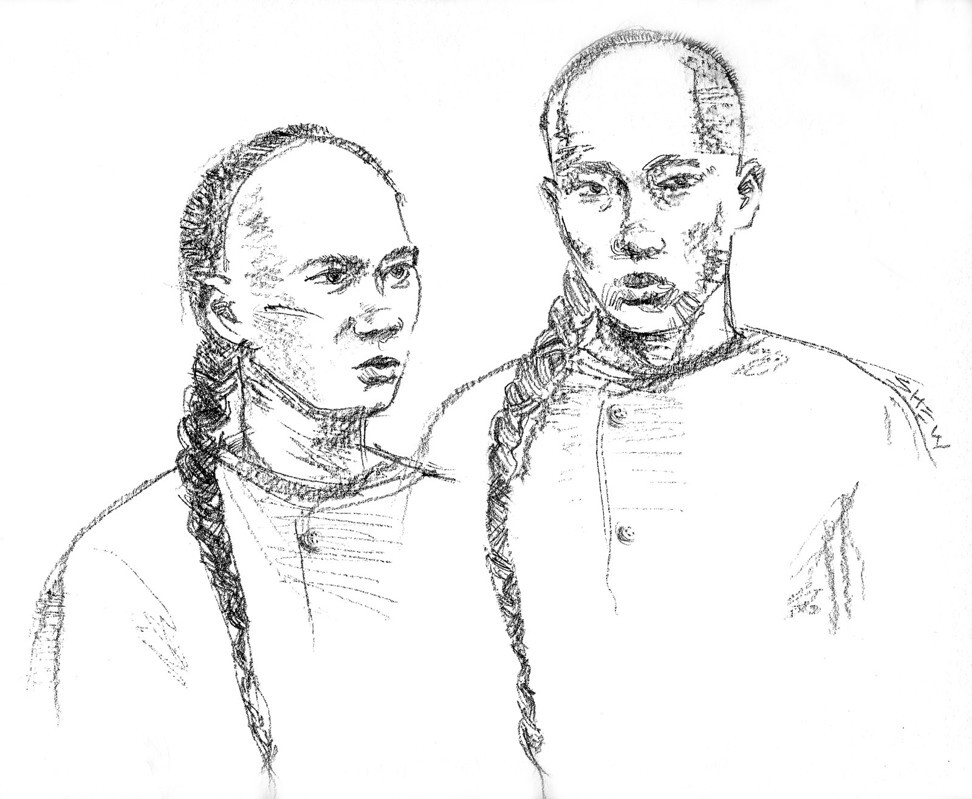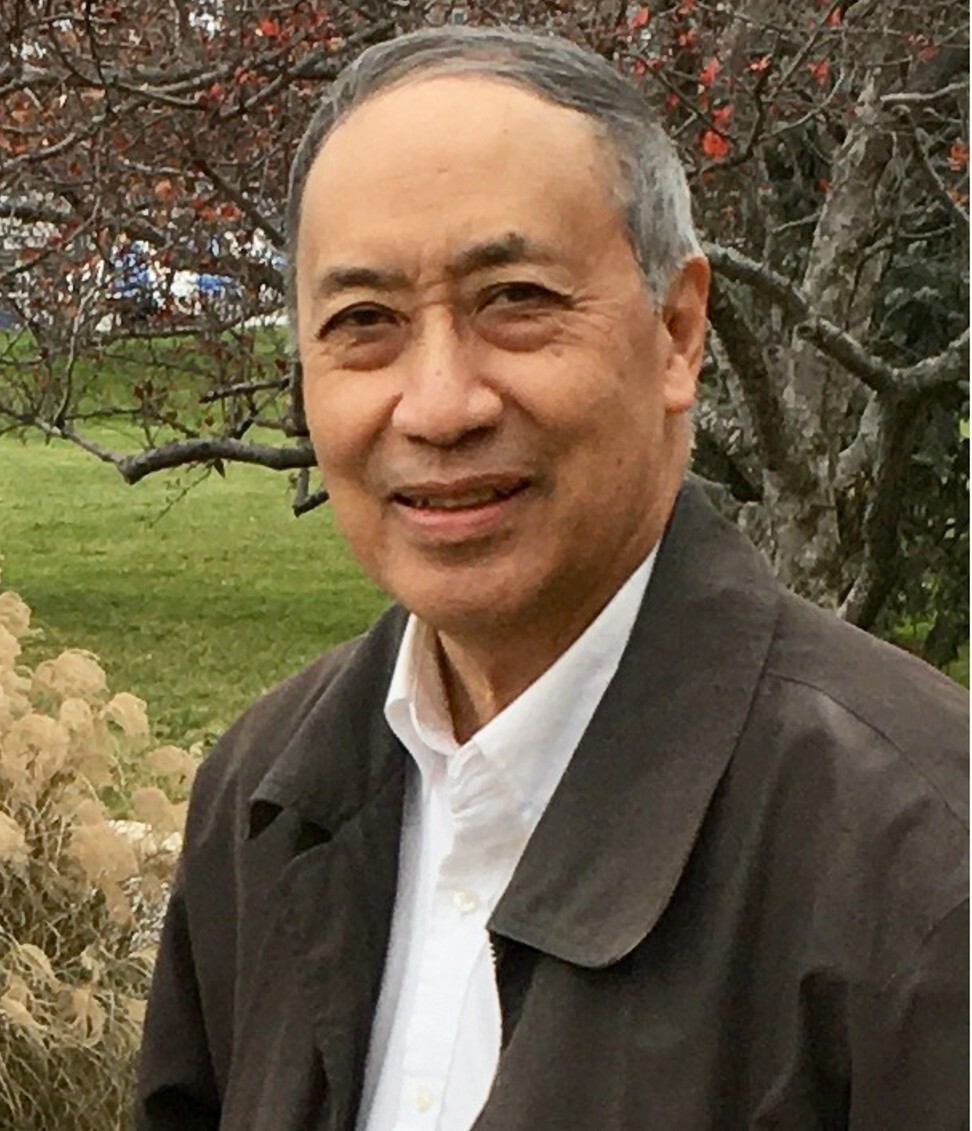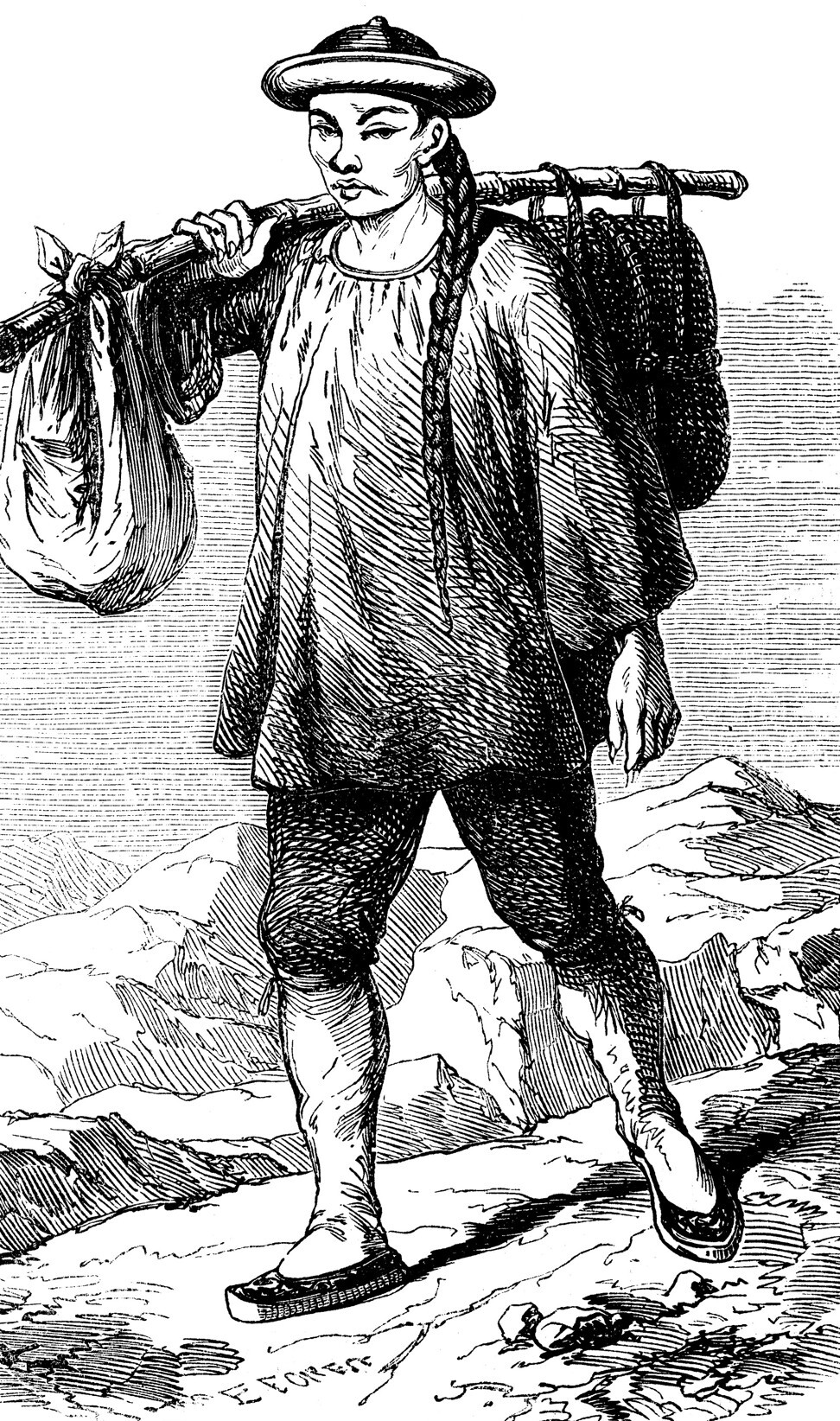
Chinese workers in America and the prejudice they faced in the 1800s looking for gold and building railways: Ed Shew’s historical novel
- Chinese Brothers, American Sons, tells the epic story of two brothers from Guangdong who migrate to the US in 1854 to seek their fortune
- Initially set during the California gold rush, it’s a story of endurance, discrimination, tragedy, love and exploitation
Wild tales of gold discoveries lure Li Yu and Li Chang to embark on a life-changing journey in September 1854, leaving the poverty of their peasant agrarian life in Southern China’s Guangdong province to board a ship to San Francisco.
In this apocryphal tale, the brothers look to make money to send back home to their families and to later take home themselves. At 16 and 26 years old, they are ready for adventure.
Chinese Brothers, American Sons, by US author Ed Shew and published by Earnshaw Books, is a historical novel about the love and loyalty of the two Li brothers and their experience in an America that did not recognise them as equal. The US legal system at the time banned a Chinese person from making a legal complaint against a white one, so in the book, when one brother gets badly beaten and his gold stolen, there is no legal recourse for him to take.
“There were laws against Chinese,” says Shew from his home near St Louis, in the US state of Missouri. “A Chinese person couldn’t even testify against a white person in those days. So from what I read, the white miners could run roughshod over the Chinese, beat them up and take their claims, and sometimes even hang them and murder them, and nothing would be done.”

In his book, the Li brothers arrive in the US in November 1854 and quickly make for the goldfields they’d heard all about, the so-called golden mountain. The precious metal had been discovered in the Sierra Nevada mountain range in eastern California six years earlier, an attraction for thousands of men from Guangdong keen to seek their fortunes in the California Gold Rush.
Later the Lis also find work on the first Transcontinental Railroad. Along the way, younger brother Li Yu meets and falls in love with Wang Wei, a young woman trafficked from China. In those days, many Chinese women were sold into prostitution, as concubines, or into domestic service.
Shew highlights the entrenched inequality of the US in his novel, but it is also a story of the men’s growing love for their new homeland and the opportunities it offers. It’s also a tale of a patriarchal society where Chinese women had no say over their lives and were often simply sold.
“I started doing some research and I was first looking at the gold mines,” Shew says. “I didn’t realise that more than 20 per cent of the gold miners were Chinese. And then I started looking at the railroad, and that wasn’t something that we covered in American history.
“I found out a year or so later that Stanford University had just started research looking at the Transcontinental Railroad and they had discovered that no first-hand account had ever been found. They’ve been working on it ever since and they still haven’t found an account from what they call a ‘Railroad Chinese’. They’ve even gone back to China and worked with scholars there on this. So I thought, why don’t I write a historical novel about this era?”

Parts of the novel have autobiographical elements woven into them. The relationship between the fictional Li brothers mirrors Shew’s own closeness to his older brother, John, who drew the illustrations of the characters for the book. The Shews’ father came to America from Guangdong in the 1920s, a “paper son”, says Shew, meaning he was likely travelling on another man’s papers.
While the author does not name the port the brothers travelled from in the book, Hong Kong was at the time a busy port used by Guangdong men and some women on their way to San Francisco. Then in its early years as a British colony, Hong Kong was also a finance centre for remittances coming back to China, as well as for debt collecting and other services.
The story of the Li brothers is Shew’s first novel, which he began working on in 2011 when he retired.

He read widely to understand the gruelling physical ordeal of the Chinese migrant workers. Many Chinese families found wealth in California, but Shew’s story focuses on the daily bid for survival by the men crouched over running water, waiting for the gold to appear and change their fortunes. These miners used irrigation techniques learned in the paddy fields to clear water, create a sluice system and access the soil when they were sifting for gold.
Meanwhile, labourers, many of them Chinese, chiselled and hammered at the granite rock face of the Sierra Nevada, inching their way forward, cutting a tunnel through the mountains.
In 2014, the Chinese railroad workers were inducted into the US Department of Labour’s Hall of Honour, Shew says. “There’s been some recognition about the impact of Chinese workers and their importance to American history.”

The older brother, Li Chang, aged 26 at the start of the book, is a trained chef like Shew’s father, Jimmy Lee Shew, he says, who could create a magical meal from nothing.
“So my father – that’s the person I know very little about,” Shew says of his immigrant dad. “I honestly can’t remember one conversation with him. We shared a lot of meals together. He couldn’t speak English very much. I remember him saying things like he would be catching frogs in the rivers around Canton. It didn’t really dawn on me until later when my mother used to say to me, you’re really a Lee, not a Shew – obviously he had to have come over on other people’s papers.”
Born in Missouri in 1949, and a devoted fan of the local St Louis Cardinals baseball team, Shew says his parents’ marriage was arranged.

“My mother was 15 and he was probably around 30, and I think she grew up in Chinatown in St Louis, which was levelled when they built a baseball stadium,” he says.
“Her parents ran a Chinese hand laundry. Her life was not the greatest. I think her sister got sold, too. But she’s a survivor, and she loved us very much, I know. But she was just a kid when she got married and had children. Five children in eight years … I really don’t know much about her background either. It just wasn’t talked about. She was bilingual. She could speak Cantonese. I was told I could speak a little Chinese when I was younger. But since she mainly spoke English to us, I forgot the Cantonese. She had a difficult life.”
Shew’s Chinese Brothers, American Sons is a story of endurance, tragedy, love, exploitation, discrimination and survival. There’s no sugar coating. Li Yu’s wife, who he left in Guangdong, later dies and their son, Li Wu, travels to America to find his father and uncle.

Shew’s historical detail on the engineering applied for the railroad construction includes scenes of Chinese labourers suspended in baskets and the techniques used to blast rock. In addition to the novel, Shew provides epilogues on himself and on the wider political history of Chinese immigrants in America. He also supplies a wide-ranging bibliography, for further reading on the subject.
He writes about the Li brothers in 19th-century America at the time of the railroad construction, and although the contribution of Chinese labourers has finally been recognised, racism is now on the rise again more than 150 years later, Shew says.
He and his wife are both political and social activists, and he says under President Donald Trump phrases such as “kung flu” and the “Chinese virus” to describe Covid-19 have increased anti-Chinese sentiment. As a result Shew now exercises more caution than he once did in his neighbourhood. He remembers being spat at in the Vietnam war years, and he says the US still has a long way to go concerning its treatment of Americans who aren’t white.

Chinese Brothers, American Sons may help Americans understand the difficult lives of many Chinese immigrants and their descendants. “I feel good that some of the readers didn’t know about this part of American history,” he says. “So I feel the Chinese workers are getting their due.”
